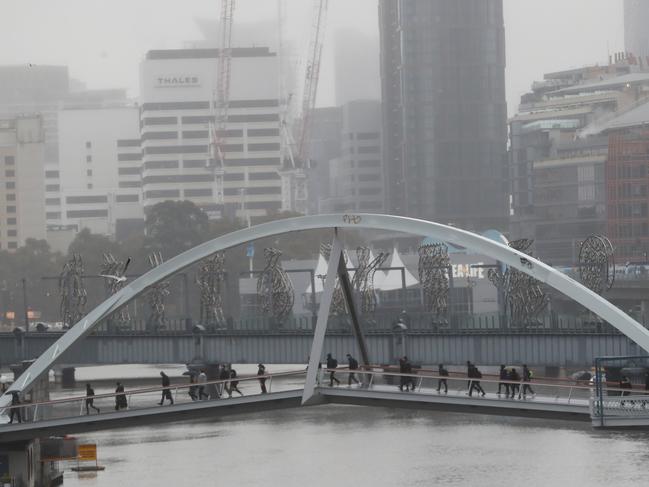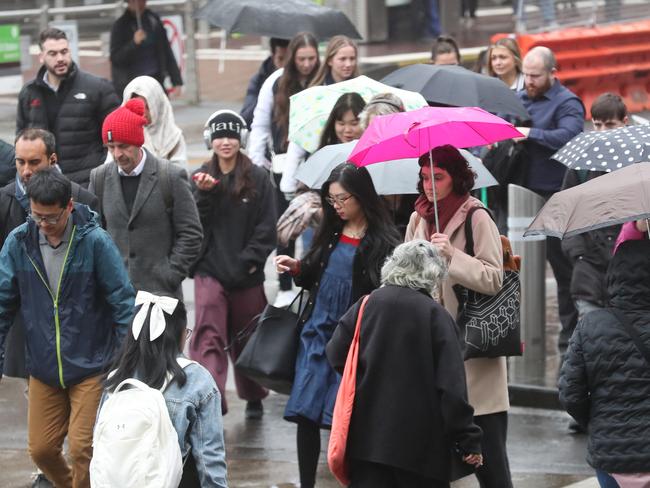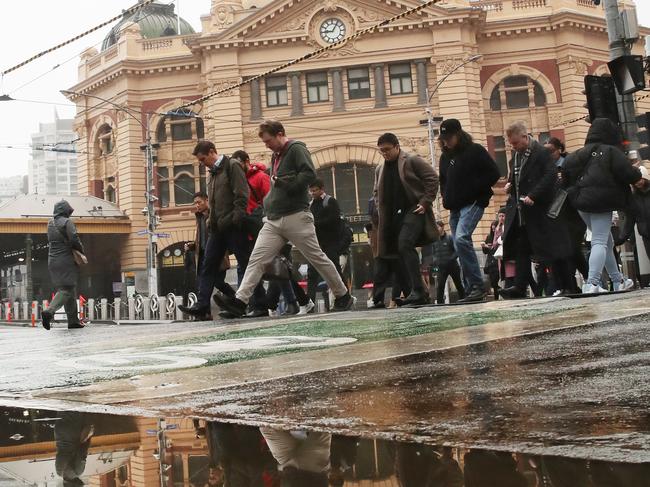Why do I feel slower, sluggish in winter? Real reason behind your Melbourne winter woes
Spring is just four weeks away but winter in Melbourne has been dragging — and there’s a simple reason why it may be taking a toll on our mental and physical health.
Victoria
Don't miss out on the headlines from Victoria. Followed categories will be added to My News.
Have you been hit with the winter blues a little more heavily than usual this winter and can’t shake the slump caused by the biting Melbourne cold?
There may be a simple answer to the lingering winter woes being felt across the state.
Melbourne has suffered a whopping 60-hour decrease in hours of sunshine so far this winter compared to last year, according to the Australian Bureau of Meteorology.
Melburnians have shivered through a total of just 203 hours of sunshine throughout June and July this year, compared to 263 hours of sunshine in June and July last year.
In July, the city had a daily average of just 3.4 hours of bright sunshine a day. The city’s darkest days last month were July 5, 9 and 16 – all without sunny days.

The data also revealed Melbourne’s minimum temperatures plummeted compared to last winter.
In June last year, the average minimum temperature was 7.3 degrees. This year, that figure dropped to 5.4 degrees.
Experts say the drop in sunshine could take a big toll on mental health and cause seasonal affective disorder, appropriately shortened to “SAD”.
Often called “winter depression” for its correlation to the colder season, SAD can affect how a person feels, thinks and behaves.

“It is thought that shorter days and less daylight may set off a chemical change in the brain leading to symptoms of depression,” Johns Hopkins Medicine said on its website.
“Melatonin, a sleep-related hormone, also has been linked to SAD. The body naturally makes more melatonin when it’s dark. So when the days are shorter and darker, more melatonin is made.”
Some research suggests that the risk of SAD increases with age and affects women more than men.
Symptoms of winter-pattern SAD include increased daytime drowsiness, loss of interest in usually enjoyable activities, grouchiness, anxiety and social withdrawal — which explains the winter woes.

And, of course, if a lack of sunshine causes seasonal affective disorder, experts say there’s one great way to reverse the symptoms.
“Spending time outside or near a window can help ease symptoms,” Johns Hopkins Medicine said on its website.
“If increasing sunlight is not possible, exposure to a special light for a certain amount of time each day may help. Certain light sources are best for SAD.”
Experts also said treatments, including prescription antidepressants, could be needed for extreme symptoms.
As with all forms of depression, experts recommended seeing a healthcare provider if symptoms were of concern.
The Bureau records sunshine by tracking the daily length of “bright sunshine” using a glass sphere sunshine recorder.



